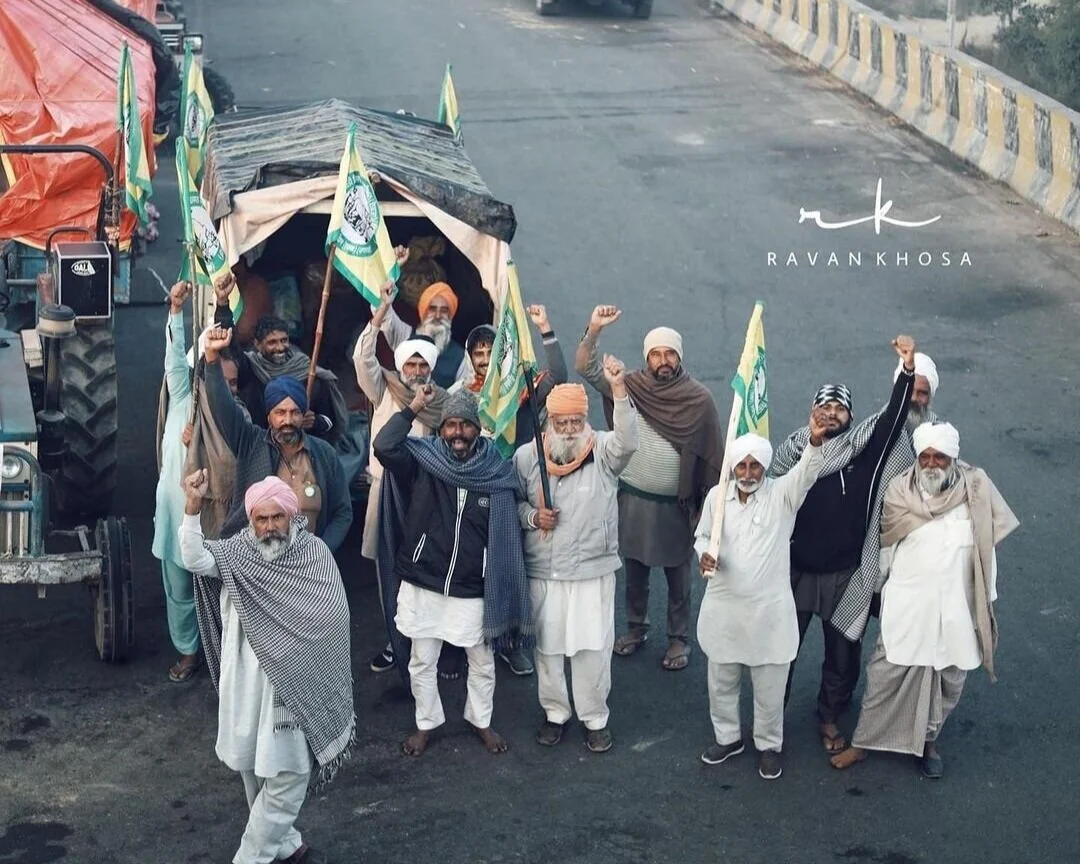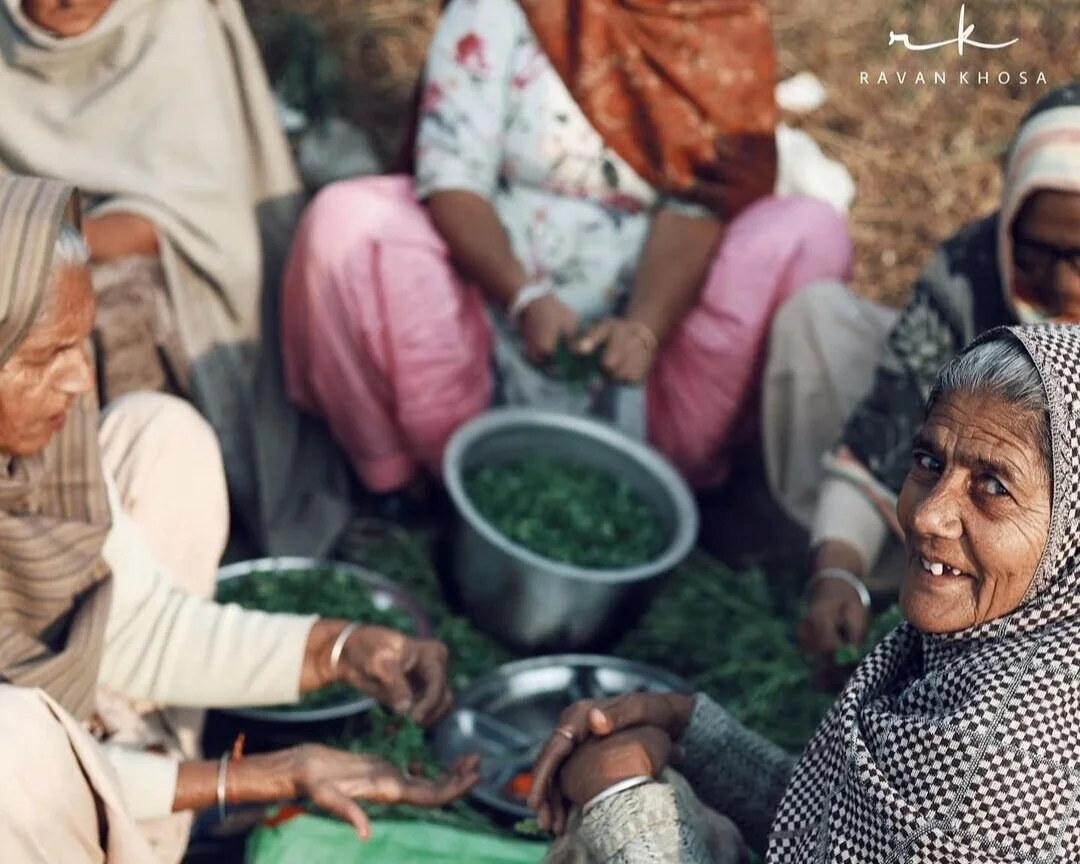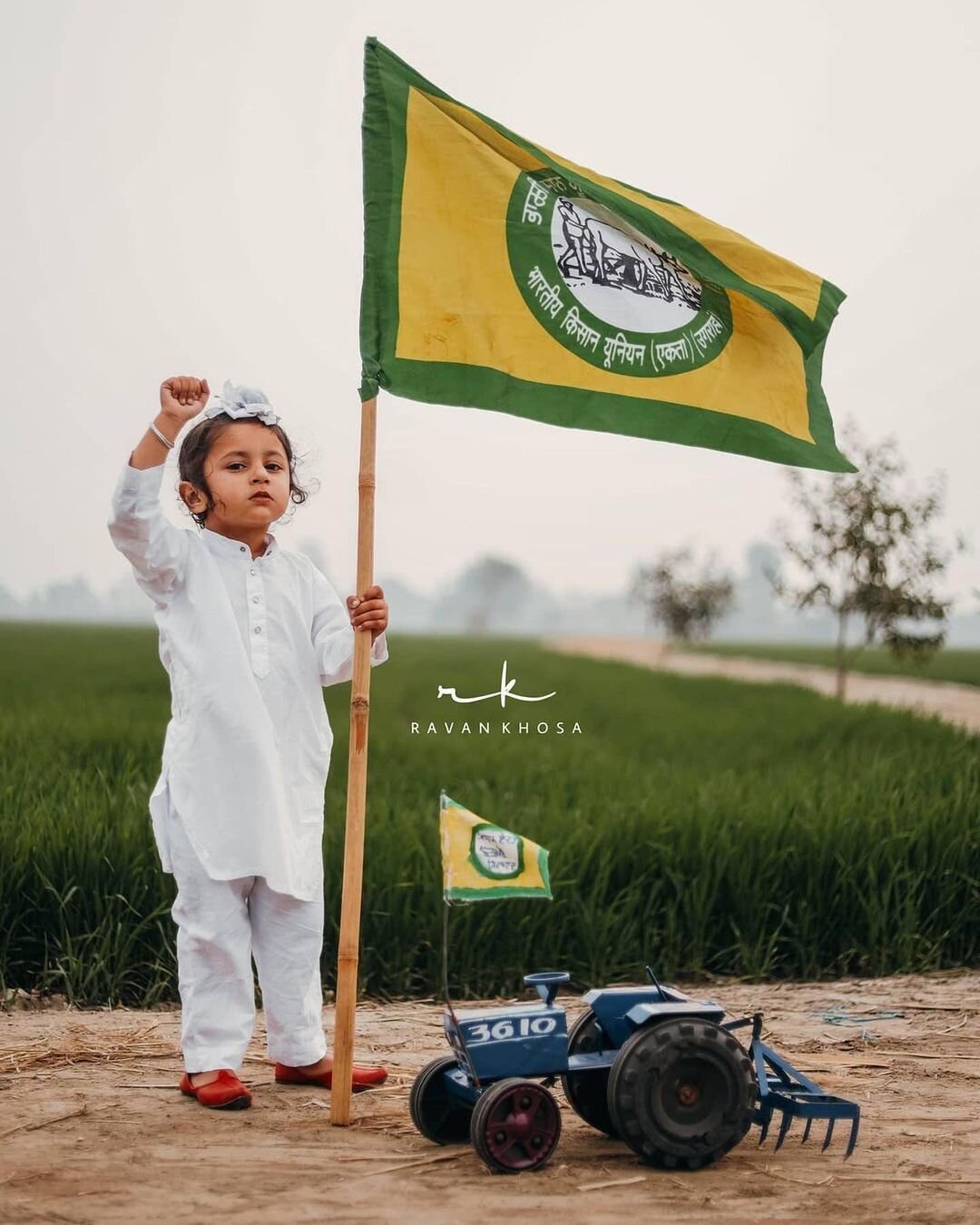Episode 10: Peeling Back the Layers of Punjab's Green Revolution
Deconstructing India’s Agricultural Industry
At this moment, the largest protest in human history is happening. 250 million farmers and workers across India, many from the states of Punjab and Haryana, have taken to the streets in protest of three new agricultural bills that threaten to obliterate their livelihood. On the surface, India’s Prime Minister, Narendra Modi, has claimed that these bills promote a “free market,” but like everything we cover in this podcast, we know that not everything is always the way it seems.
In Episode 10 of Art of Citizenry Podcast, Manpreet Kaur Kalra is joined by Arvinder Singh, Phavanjit Kaur, Amrit Singh, and Prabhjot Singh in a conversation deconstructing India’s new farming bills and the historical context we cannot ignore. They discuss how the protests currently happening are as much about land rights as they are human rights in a country grappling with deeply rooted nationalism. Together, they explore the intersection of economic development, social impact, environmental impact and religio-political constructs.
Image by Akshay Kapoor
Punjab: A Land Divided
We can’t begin this episode without understanding the history of a land divided. What is now considered the state of “Punjab” is just but a fraction of what used to be the land of lush green fields and flowing five rivers. In 1947, as the British left India, they divided Punjab between what is present day Pakistan and India. What followed was the world’s largest mass migration, resulting in the bloody displacement of hundreds of thousands of people. Families were uprooted from their homes, forced to leave the land they had lived on for generations. During the journey, many lost loved ones due to violence caused by the displacement.
Post 1947, Punjab was even further reduced in size from 58,000 square miles to 19,000 square miles. However, despite its relatively small size, it produces a disproportionately high ratio of India’s crops.
Why India’s Push for a Free Market is Exploitative
In most “developed” countries with a free market system, farmers have protections, farm subsidies, that essentially help reduce any financial risk related to weather, commodities brokers, and disruption in demands. But as with any capitalist system, these systems usually only benefit larger producers, but still, they exist, discouraging the complete monopolization of the agricultural industry by corporations.
The world farmers protest currently underway in India opens up a pandora’s box of questions that humanity is going to face in next few years. What is the future of sustainable growth, food diversity, ethnic cultures, urban migration in a profit-driven economy? Should our heroes be the next billionaires or farmers fighting on ground to retain food diversity - something that makes this world worth living? These are the questions we all need to ask. - Arvinder Singh
Capitalism at its core is built on the existence of inequities. The goal of any business operating in a capitalist society is to maximize profits for shareholders, prioritizing profits over people. This notion leaves those at the bottom, the workers and small farmers, with only a small share of the wealth, if that. Addressing these layers of complexities when understanding any issue is critical.
In India, the main security blanket that exists for small farmers in particular is the Minimum Support Price (MSP), which has not been included in writing under the new ordinances. Without significant subsidies and a MSP, India’s small farmers are likely to be priced out and unable to compete. As is the case with free markets, when corporations get involved, the marketplace becomes competitive, allowing corporations to undercut prices to the point at which small farmers are unable to compete, left with no farm, and no land.
This in turn, only feeds into an already volatile situation with India’s farmers experiencing an exorbitantly high suicide rate.
“My family went into a lot of debt to try to purchase the supplies and the agrochemicals that they needed to keep up with the changes of the Green Revolution. And that debt got passed down. So it started with my grandfather, went to my dad, from my dad it went down to my Chacha. And so my Chacha, who's still in Punjab and still farming he's still dealing with that debt… For a lot of folks, it seems so insurmountable, and they don't see an opportunity to get out of it just through farming, and suicide becomes the only option or the only option that they see.” - Amrit Singh
It also then allows for corporations to hoard large amounts of crops, increasing demand, and therefore, the market value of the crop. They can, in turn, sell the crops at a much higher price than what the farmer was paid to begin with. This allows for unfair pricing -- hurting both farmers and consumers while lining the pockets of those who already hold most of the country’s wealth.
A Note on Global Economic Development
“The economics of a particular country has to be grown there. If you try to import it directly from another country, those models sometimes fall flat.” - Arvinder Singh
The issue with a cookie cutter approach, we fail to acknowledge the complexity of layers that exist in any given society. We see this with social entrepreneurship as well. To assume the same approach to economic development can work in any country is naive. We must recognize that sustainable development and change requires understanding the nuance surrounding why a society exists the way it does. That requires deconstructing the layers of deep seated cultural and often even religious influences. While capitalism on paper has its pros, the way modern day capitalism is built, it not only furthers, but benefits from societal inequities. Capitalism as we see it currently centers corporate profits.
The Environmental Impact of Agribusiness
What is wheat and paddy in India is corn in the United States. Let’s take a moment to step back and reflect on the environmental factors at play when we think about agribusiness.
In the United States, when driving through the Midwest and Great Plains, you cannot miss the sprawling corn farms. Corn has become a staple of the US farming industry because of its versatility. While it can be used to make food like corn meal, it’s primary use in the United States is for ethanol, animal feed and high-fructose corn syrup. Corn receives more subsides from the federal government than any other crop. It also consumes a large amount of freshwater resources and 5.6 million tons of nitrogen in the form of chemical fertilizer which gets washed into lakes, rivers, and the ocean -- hurting the ecosystem.
What has happened in regions such as Ohio is that the farming industry is no longer working to feed people, instead it is working to simply sustain in whatever way possible. Agricultural diversity of fruits and vegetables has been sidelined for the safer pick: corn. In an article published by Scientific American, the author sums up the problem with this key point:
“It would be simply wrong to blame farmers for any of these issues. In this economic and political landscape, they would be crazy not to grow corn; farmers are simply delivering what markets and policies are demanding. What needs to change here is the system, not the farmers.”
Looking at economics alone is just not enough.
Unpacking the Green Revolution
To understand the impact of the Green Revolution on Punjab, we first need to understand all that led to the infiltration of chemicals depleting the nutrients of Punjab’s soil. The thing about the Green Revolution is that it promised self-sustainability to India as a nation. Instead of having to import crops to feed India’s exponentially increasing population, India would be able to produce enough crops for the masses. This led to farmers being forced to use specific high yielding seeds, which they were forced to purchase along with all the necessary chemical fertilizers at retail price, not wholesale. So what we saw during the Green Revolution is that the agriculture economy of Punjab was co-opted by the central government.
The old way of farming, it was very much community-centered. The farmers had a role to play in the functioning of their society, but so did everybody else, whether you were a seamstress, or whether you were an ironsmith, everybody had an important role to play to the functioning of everybody else. So you're responsible to each other and for each other. - Amrit Singh
One of the biggest costs of the Green Revolution was that it was no longer possible for Punjab to self-sustain itself agriculturally with the emphasis on wheat and rice farming. Even the varieties of wheat and rice that were grown were now limited to the ones that satisfied the goals of the Green Revolution, tremendously reducing biodiversity.
Punjab’s Contentious Relationship with the Central Government
Since 1947, India’s Central government has had an unstable relationship with Punjab, especially Punjabi Sikhs. One of the issues that remains at the heart of State versus Central government tension is access to river water, especially after Punjab was further split to form the state of Haryana and Himachal in 1966.
The partition of Punjab between India and Pakistan, left Punjab with only 3 of its 5 rivers. The further divide of Punjab made the rivers inter-state rivers, meaning Punjab lost not just land, but was choked of its water resources. By creating artificial boundaries that split Punjab’s rivers between states, they suddenly fell within the purview of the central government. In reality, under India’s constitution, river management falls under the purview of the state government.
It's quite common for developing countries to face these sorts of injustices, especially when you have such a dominant government structure that basically just tramples on every single person. - Phavanjit Kaur
Religion, Nationalism + Politics
“The function, the very serious function of racism is distraction. It keeps you from doing your work. It keeps you explaining, over and over again, your reason for being. Somebody says you have no language and you spend twenty years proving that you do. Somebody says your head isn’t shaped properly so you have scientists working on the fact that it is. Somebody says you have no art, so you dredge that up. Somebody says you have no kingdoms, so you dredge that up. None of this is necessary. There will always be one more thing.” - Toni Morrison
From the partition of Punjab in the Sikh massacres in 1984, Sikhs have been consistently persecuted by the Indian state. One of the most tried and tested ways to erase a culture or community is by erasing its history.
“Every facet of this movement is related to religion, and to try to create a divide and separate those two is a disservice.” - Prabhjot Singh
The Indian government’s response to the protestors has been nothing short of history repeating itself. From being called terrorists to blackouts on fair media reporting, memories of India’s government-sanctioned 1984 Sikh Genocide are resurfacing, opening up wounds that never fully healed. Seeing the army deployed and the police brutally beating protesters is horrifying. It is forcing so many of us to revisit our community’s past trauma and face the realities of our present. Survival is the name of the game, since thriving is a far fetched dream.
Art by Baljinder Kaur
“The farmers protest is the final attack in a larger Sikh genocide that the Indian Government has waged against Sikhs.” - Prabhjot Singh
The protests are being led by our grandparents and great grandparents -- braving the cold winter air of Delhi, the capital of India just to ensure their voice is heard. The reality is, these laws are deadly to the livelihoods of small farmers. So much so, that these farmers are willing to risk their lives to demand that the laws be repealed and that farmers, not just corporations, have a seat at the decision-making table. From Punjab, Haryana and other parts of India, these farmers have been met with police brutality and government-regulated false reporting. It is not uncommon for oppressors to paint people who challenge their power as unpatriotic, but isn't it more patriotic to hold your government up to a higher standard? Painting farmers as terrorists to justify state-sponsored violence is the reality of India’s democracy.
A Look at Healthy Nations of Tomorrow
“No community can survive without the role of farmers, and I think if you're going to look at healthy nations of tomorrow, they have to look at ‘What are the kind of farming practices that we are promoting within our own community?’ and ‘What are the kind of farming structures that we are enabling?’ And if you feel empathy towards small farmers, I think, wherever you are in the world, I think it becomes your duty to raise your voice and to empathize with farmers and to raise your voice for their rights.” - Arvinder Singh
Additional Resources + Links
If you would like to support those protesting in Delhi, please consider donating to KhalsaAid.org. We must demand fair reporting and support initiatives like Trolley Times, which is a grassroots project highlighting the voice of protests in Delhi right now. Also, please consider donating to Sahaita Farmer Support Project.
Articles About the Protests
Washington Post: History shows Punjab has always taken on tyrants. Modi is no different.
The Atlantic: Where Nationalism Has No Answers
Vice News: The Indian Farmer Protest Shaking the World
AP: India’s winter of discontent: Farmers rise up against Mod
NY Times: Angry Farmers Choke India’s Capital in Giant Demonstrations
Slate: India Just Had the Biggest Protest in World History Will it make a difference?
MsMagazine: Unprecedented Farmers Protests in India: Lest We Miss This Feminist Moment
Additional Resources Related to the Protests
Educational Content
Delhi Fateh Diwas: When Mughals fell and the holy symbol of Khalsa Panth was unfurled at Red Fort
Time: It's Time India Accept Responsibility for Its 1984 Sikh Genocide
The Paradox of India’s Bread Basket: Farmer Suicides in Punjab by Mallika Kaur
Scientific American: It’s Time to Rethink America’s Corn System
The Guardian: Norman Borlaug: humanitarian hero or menace to society?
‘The Lockdown Killed My Father’: Farmer Suicides Add to India’s Virus Misery
Connect with Our Guests
Arvinder Singh is a technologist, entrepreneur and community builder. He currently serves as Entrepreneur in Residence at The Digital Economist, a Washington DC based think tank. In the last decade, Arvinder has served on a diverse roles - as CTO of a Big Data and AI company he co-founded, as an educator, an ethnic TV and Radio host, entrepreneur and a civil rights activist. As a civil rights advocate, he convinced a US House of Representative to back a bipartisan call to FBI to track hate Crime and was part of the delegation invited to the Obama White House for its first-ever briefing on Sikh civil rights issues in 2012. Follow him on Twitter: @askang
Amrit Singh aka Noyz is a rapper, spoken word artist, author, community organizer and mental health professional from Brampton, Ontario, Canada. Follow his work by visiting noyzhiphop.com + check out his book and soundtrack, Keep Moving On. Also, be sure to tune into Immigrant Hustle Podcast by Noyz & B Magic
Phavanjit Kaur is passionate about social justice, politics and building sustainable habits + solutions. Based out of Malaysia, follow her work on Instagram: @phvnkaur + @kitaaban.withkaur
Dr. Prabhjot Singh is a Bay Area Sikh activist. He finished his doctorate in educational leadership, and has been working to educate the Sikh community on issues that are effecting them, while also trying to promote the values of Sikhi. Follow his activism work on Instagram + Twitter
Thank You
This podcast is dedicated to creating a safe space to discuss and challenge topics surrounding how we each navigate our personal advantages and disadvantages. I want to extend a special thank you to our guests, Arvinder, Phavanjit, Amrit, and Prabhjot for sharing their valuable insights. These conversations are not easy, and involve revisiting years of generational pain and trauma.
This episode features the song Land of Promise by Amrit Singh aka Noyz ft. Daysdeaf and produced by EMPWER from his newest album, Keep Moving On.
Finally, thank you for listening! Please subscribe, download, and leave a review for Art of Citizenry Podcast — I appreciate your love and support! Also, if you want to connect, please feel free to follow me and share your thoughts with me on Instagram @manpreetkalra + @artofcitizenry.







